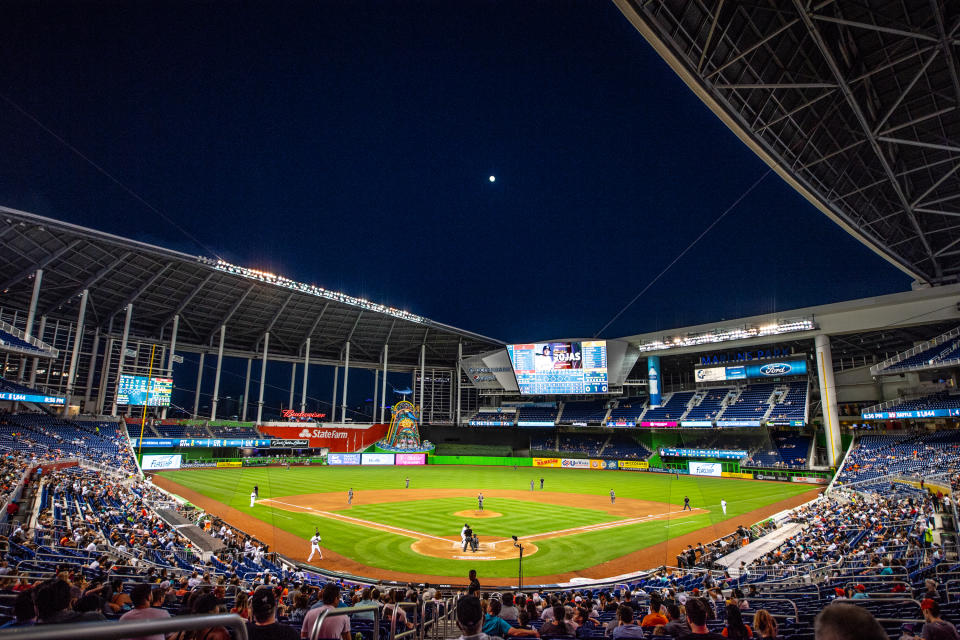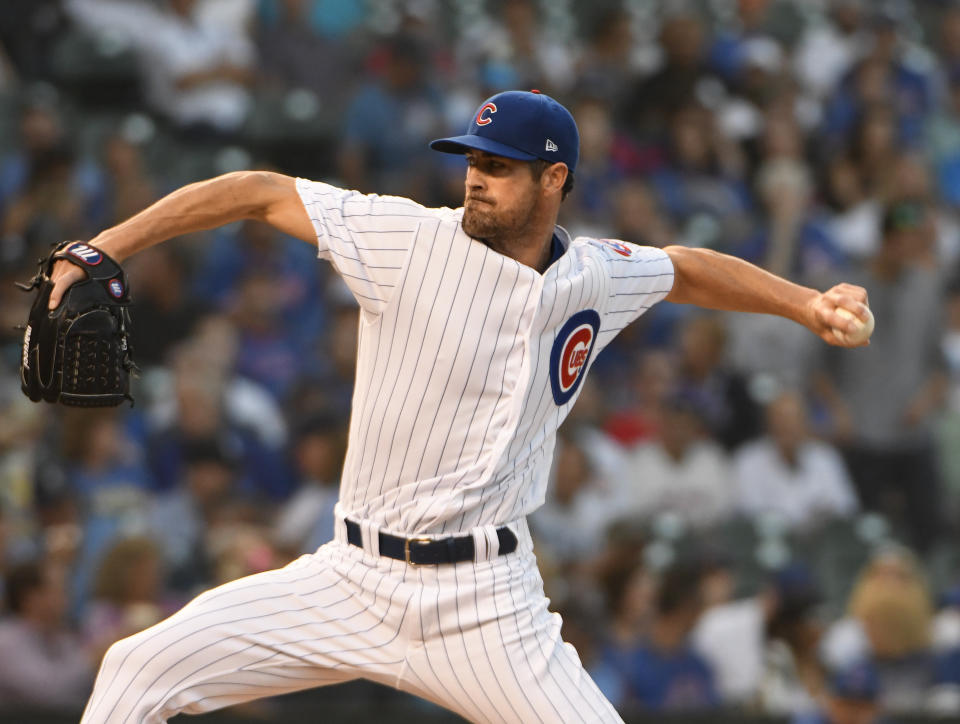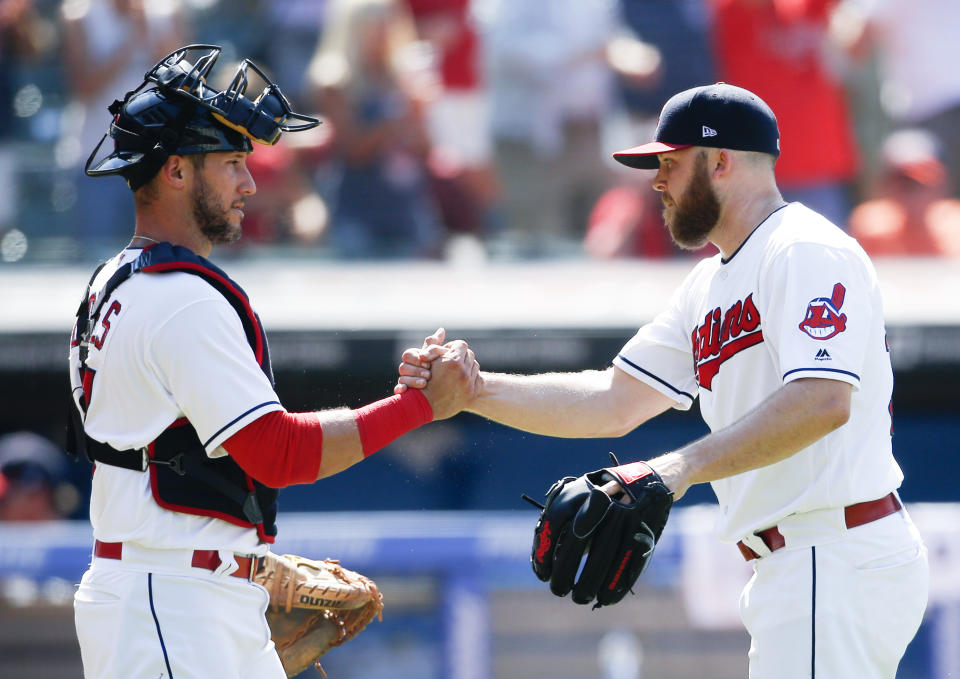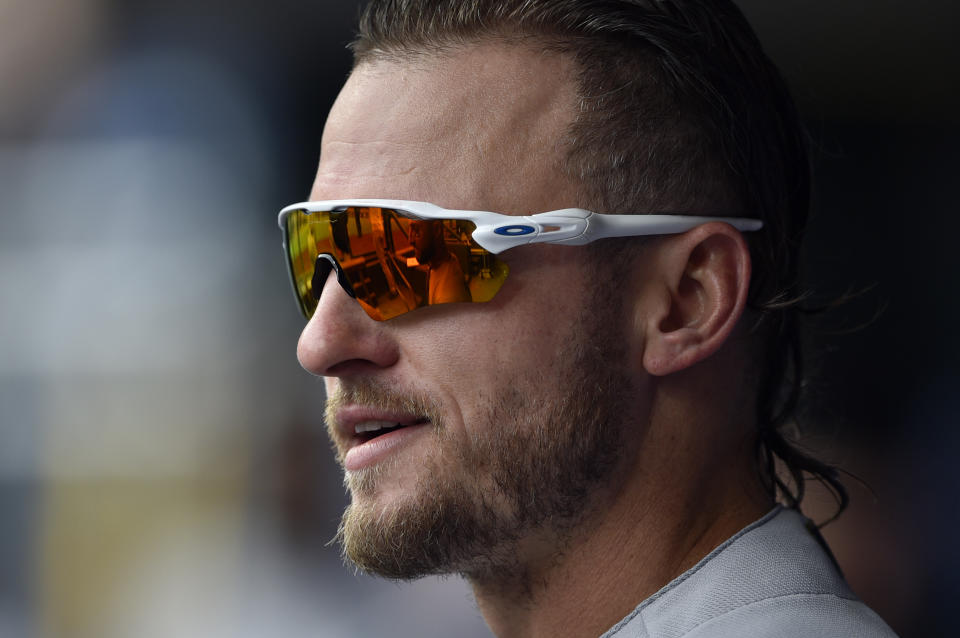10 Degrees: Baseball's attendance woes have MLB and owners rightfully spooked
Sometime over the next 10 days, the year-over-year dip in Major League Baseball attendance will exceed 3 million fans. By the end of the season, barring an uncharacteristic jump in September attendance, MLB will fail to crack the 70 million-fan threshold for the first time since 2003.
To say there is panic around the game would be an exaggeration. Perhaps a better way to put it is deep concern.
Before there were multibillion-dollar local television deals and the multibillion-dollar startup MLB Advanced Media, teams lived and died by the gate. Amid all the ancillary revenue streams that have goosed the game’s annual revenues to more than $10 billion, attendance remains a bellwether of the game’s overall health. Baseball is a game of senses, the sights and sounds and smells best consumed at the ballpark.
Following eight years of fairly stagnant attendance, the average crowd dipped beneath 30,000 per game last year. Through 1,947 games this season, it is at 28,874. September often does no favors to that number, with kids back in school, though the pennant-race intrigue in the National League and the playoff jockeying in the American League can’t hurt the prospect of a slight recovery.
Still, it’s not the top of the standings that are of concern. Baseball fans, it turns out, may be cannier consumers than teams recognized – or hoped. Seven teams are drawing 5,000-plus fewer fans per game this season, and all seven are suffering through miserable seasons, flat-out embracing the notion that major league teams no longer need to spend in free agency or, in some cases, both.

The Miami Marlins’ average attendance is down from 20,585 to 10,054 – in part because under Derek Jeter’s stewardship, the organization is now reporting actual attendance numbers, as opposed to the fakery Jeffrey Loria and David Samson used to proffer. Just behind them are the Toronto Blue Jays and a drop of 10,442. The Marlins guaranteed $3.25 million to major league free agents this winter – and spent barely half of it, dealing their lone signing, Cameron Maybin, to Seattle. The Blue Jays, who entered the season publicly saying they hoped to contend, put all of $15 million for Jaime Garcia and Curtis Granderson behind the effort.
The Kansas City Royals and Detroit Tigers are next on the list, down more than 6,000 per game each, and their winter outlays were $14 million and $11.75 million, respectively. The Baltimore Orioles waited until late March to spend $57 million on Alex Cobb, and they are now on pace to be the third team in the 57 seasons of 162-game schedules to win fewer than 50 games. They’re on a 46-116 pace. The Royals aren’t much better, at 49-113.
Pittsburgh guaranteed a whopping $0 to free agents this winter. The Pirates have stayed around .500 this season, play in arguably the most beautiful park in MLB and still have the fourth-worst per-game attendance in baseball, ahead of only the mess in Miami and two teams, Tampa Bay and Oakland, that play in stadiums that should be condemned.
Know why? Because the Pirates have spent the last quarter-century treating their fans like mopes. Right or wrong, noble or ignoble, intentional or accidental, MLB’s restrictions on teams’ abilities to spend on players – penalties for exceeding domestic-amateur thresholds, straight-up caps on international amateurs and last winter’s free agent freeze – has a psychological effect on fans. They already see the salary-capped systems of the NFL and NBA as more fair, even if those systems in reality take away power from the players.
I wrote about the looming attendance mess barely three weeks into the season, and a number of people suggested I was suffering from Chicken Little syndrome. That the weather was awful. That it would turn around. That the game is plenty healthy.
And while in many regards baseball is, problems beyond a lack of competitiveness exist. The lack of balls in play. The 3-hour, 4-minute average game time, plodding for many. The cost of tickets, parking, hot dogs, beers. This is all real, and to deny its combined consequence would be ignoring a threat to the game. Which is why the league and ownership are talking about possible remedies.
Is this what it takes to juice the free-agent market? A recognition that the return on investment for free agents doesn’t just manifest itself in Wins Above Replacement but the intangible, immeasurable brain of the consumer? Owners of the 11 teams with 100,000-plus attendance dips giving executives the go-ahead to take the risks inherent in free agency?
Once upon a time, it seemed as though …
1. Cole Hamels was going to be one of the close to 200 free agents available this winter. And he still may. Hamels turns 35 this winter, and his salary next season would be $20 million.
Then again, what he’s done since joining the Chicago Cubs near the trade deadline makes a one-year, $20 million commitment seem altogether reasonable, even if it would cost them nothing to decline their club option since the Texas Rangers agreed to cover its $6 million cost when they consummated the deal.

Even more incredible in Hamels’ five-start run than his 0.79 ERA is the number of home runs he has yielded: zero in 34 innings. With the Rangers, he allowed 23 in 114 1/3 innings, far and away the highest rate of his career. In an era where the base hit is an anachronism, nothing can torpedo a pitcher’s season quite like a propensity to give up home runs. Which is one reason …
2. Jacob deGrom may have leapfrogged Max Scherzer in the National League Cy Young race. Earlier this week, I posed the question to Twitter which pitcher deserved the award based on his performance thus far. Pitcher A was Aaron Nola, who has been incredible himself, Pitcher B deGrom and Pitcher C Scherzer.
There are three pitchers in the National League who are in the midst of incredible seasons. All have an excellent Cy Young case. Here are the most relevant numbers for the three. Who ya got: Pitcher A, Pitcher B or Pitcher C? And why? pic.twitter.com/fvq7MzGNpe
— Jeff Passan (@JeffPassan) August 24, 2018
DeGrom’s 0.41 home run-per-nine rate is best in baseball. Nola’s 0.43 is second. Trevor Bauer’s is third, Patrick Corbin’s fourth, Chris Sale’s fifth. Each will show up on perhaps every Cy Young ballot this fall, because in games where singles have become anachronisms, preventing home runs might be the single best skill a pitcher can possess.
Whether that translates to deGrom winding up in first on those ballots is a different question altogether. Voters may penalize him for playing on the Mets, which seems unfair, because it’s already enough of a penalty to have to play on the Mets. Were he with, say, the Nationals or the Phillies, deGrom’s record wouldn’t be 8-8. He isn’t, though, and it is.
For those who thought this all adjudicated in 2010 when Felix Hernandez won the AL Cy Young with a 13-12 record, remember: He was clearly the best pitcher in the league that season. The competition for deGrom is fierce enough that voters for the Cy Young may have just as difficult a time differentiating among them as they do choosing between …
3. Ronald Acuña Jr. and his competition. Juan Soto, remember, is doing things we haven’t seen 19-year-olds do at the big league level in nearly a century. All Acuña is doing is hitting better than anyone in the major leagues since the All-Star break.
Two more hits Sunday raised his season average to .290/.358/.570. And in his 36 second-half games, Acuña is slashing .341/.420/.732 with 14 home runs (second behind Matt Carpenter), 31 runs (second behind Rougned Odor), 26 RBIs (eighth) and eight stolen bases (fifth).
He is 20 years old.
That’s just a reminder for those who considered the preseason hype surrounding Acuña excessive. It wasn’t. He is, right now, one of the 50 best players in baseball, at very least, and he may be top 25. The Braves’ long window of competitiveness is nigh, and while a good portion of it has to do with their absolute surfeit of young pitching, the centerpieces are the 20-year-old Acuña and 21-year-old Ozzie Albies. Atlanta is happy to ride all of Acuña’s home runs to an NL East title, diametrically opposed to how …
4. Kenley Jansen is driving the Los Angeles Dodgers into a pit of despair with his predilection to allow longballs. Jansen sat Sunday after three consecutive outings in which he allowed a home run. The first two lost games to St. Louis. The Dodgers wriggled out of the third Saturday against San Diego, scratching out an extra-innings win that did little to quell the concern over Jansen.
It recalled the beginning of the season, when Jansen lost his first game by allowing a home run and blew a save in his second with another. Whether there are any similarities beyond that are unclear, though the 10 home runs Jansen has yielded this season are twice what he did last year, and the notion of the Dodgers advancing deep into the postseason without a locked-in Jansen are dubious.
The Dodgers’ bullpen suffered during his absence with an irregular heartbeat, and they now sit 2½ games behind Arizona and Colorado. Not insurmountable, by any means, but bothersome, particularly because they’re behind St. Louis, Milwaukee and Philadelphia in the wild card, too. It would be a little easier to stomach if the Dodgers’ closer drama mimicked that of …
5. Cody Allen and the Cleveland Indians. Allen himself has allowed 11 home runs – and five have come since the All-Star break, during which opponents are hitting .274/.348/.565 against him. The two home runs he allowed Saturday – to Ryan O’Hearn and Hunter Dozier – were particularly brutal because O’Hearn and Dozier are Royals, and the Royals are not supposed to be walking off the team 34½ games ahead of them in the standings.

Manager Terry Francona indicated he plans to stick with Allen despite having Brad Hand and Andrew Miller available to finish games. Which is what makes the entire thing easier to stomach. The Indians have an almost-insurmountable lead in the AL Central. Francona can use the remaining five weeks in the season to rebuild Allen’s confidence or reassess how to use him when high-leverage situations truly matter.
This is what good managers do: They don’t panic if their options don’t necessitate them to. Were the Indians locked in a tight race, would Allen be closing anymore? Probably not. The Indians happen to have the luxury of time, something that would be nice for …
6. Aaron Judge and Gary Sanchez but isn’t in close to the same supply. The New York Yankees aren’t exactly in danger of losing their wild-card slot – Seattle is 8½ games back – but their playoff prospects depend quite a bit on healthy returns from their best bat and their indispensable catcher.
The prognosis for Judge isn’t great. After a fastball broke his right wrist in late July, he was hoping to be back within a month. He hasn’t even started swinging a bat yet. And considering the difficulty so many face returning from wrist and hand injuries, the prospect of Judge not looking like Judge even if he does come back in September is very real.
Sanchez may rejoin the Yankees by this time next week, when they start a West Coast swing through Oakland and Seattle that could help lock in home-field advantage in the wild-card game. Outside of three games he played before aggravating his groin injury, Sanchez missed two months, leaving the Yankees toggling between Austin Romine and Kyle Higashioka. Romine in particular has filled in more than ably, a testament to New York’s depth, something …
7. Matt Holliday helped show last season. Holliday, remember, was a first-half revelation for the Yankees, OPSing .877. Back issues hampered him the rest of the season, and this winter, he never found a job, one of dozens of players whose age scared off teams.
Now 38, Holliday signed a minor league deal with the Rockies on July 29, crushed the ball in 66 plate appearances between rookie-league Grand Junction and Triple-A Albuquerque and arrived in Denver with a bang, crushing a tie-breaking home run Saturday and keeping the Rockies tied for first.
With Carlos Gonzalez in the midst of a nice comeback year, David Dahl having a bit of a breakout and Charlie Blackmon doing Charlie Blackmon things, Holliday is unlikely to find many at-bats beyond pinch-hitting duties or perhaps the occasional day at first base. And that’s fine by him. It’s still a great story: the forgotten star going back to the place that drafted him, developed him, watched him blossom and saw him leave. He’s all grown now, a great career behind him – .299/.378/.511 with 315 home runs and 1,218 RBIs – and maybe a stroke of magic ahead. It’s not always wise, as …
8. Kendrys Morales continues to teach me, to count out the old dogs. Morales is 35, and on May 1, when he looked like he didn’t belong anywhere near the major leagues, I suggested, rather forcefully, that the Toronto Blue Jays cut him and give his plate appearances to Vladimir Guerrero Jr.
The Blue Jays, not surprisingly, declined to take the advice. It was offered with logic behind it, of course – that Guerrero gave them a better chance to contend, that Morales’ contract that continued through the 2019 season already was sunk cost. Over the three months since then, Morales has put up an OPS over .950, and his latest stretch was the coup de grace.
On Sunday, he homered for the seventh consecutive game, tying Barry Bonds, Jim Thome and Kevin Mench – Kevin Mench!? – for the second-longest streak. Three men share the record: Ken Griffey Jr., Don Mattingly and Dale Long – Dale Long!? – each homered in eight straight.
So mea culpa, Kendrys Morales, for the doubt. It doesn’t take away that Vlad Jr. belonged in the big leagues then and belongs there now, but so, it turns out, does Morales. Though even if he ties the record against Baltimore on Monday, his game Tuesday won’t be the most important for a Blue Jay. Because …
9. Josh Donaldson is scheduled to head out on a rehab assignment. Once he does, the Blue Jays can place him on waivers, opening up the possibility they could trade him.

Now, a few things to consider. First off, Donaldson is owed in the neighborhood of $4.8 million for the rest of the season, and without a decent sample of him playing, the likelihood of a team claiming him isn’t great. Should Donaldson clear waivers, he then could be traded to any team.
The incentive for Toronto to deal him may not be great, either. In addition to presumably needing to eat some of Donaldson’s salary, the prospect of a team trading a decent prospect for him is likewise small. Considering Toronto can offer Donaldson a qualifying offer and reap a high draft pick if he signs elsewhere, a prospect plus whatever money Toronto sends outweighing the value of that draft pick is unlikeliest of all.
Weirder things have happened. This is baseball. This is a pennant race. Teams can get desperate. When the Cubs dealt for …
10. Cole Hamels, after all, they didn’t expect five starts later to be at least toying with the idea of bringing him back next year. They figured the Rangers were going to ship them the $6 million to buy out his option, thank him for his contributions and wash their hands of him.
And yet here they are, thankful that he’s on their side, particularly with Yu Darvish gone for the season. Hamels’ next start comes Tuesday against deGrom and the Mets’ putrid offense, and the one after that is in Washington against a Nationals team that was shut out in three straight recently, and this run of his, harkening back to his time with the Phillies, might not be ending soon.
So even though that $6 million payment does not go to the Cubs if they pick up the option, according to sources, it’s still within the realm of possibilities. The free-agent pitching options this winter aren’t great. There’s no such thing, the old baseball chestnut goes, as a bad one-year deal. And if the rest of baseball sees what has happened this year and takes it as a sign to start spending, the $20 million cost may not look that bad after all.
More from Yahoo Sports:
• Does Eric Decker’s retirement with Patriots give opening for Dez Bryant?
• Tiger Woods sidesteps pointed question about President Trump
• Steph Curry weighs in, via essay, on gender equity issues
• Gay Cubs co-owner OK’d move to get Daniel Murphy

 Yahoo Sports
Yahoo Sports 
